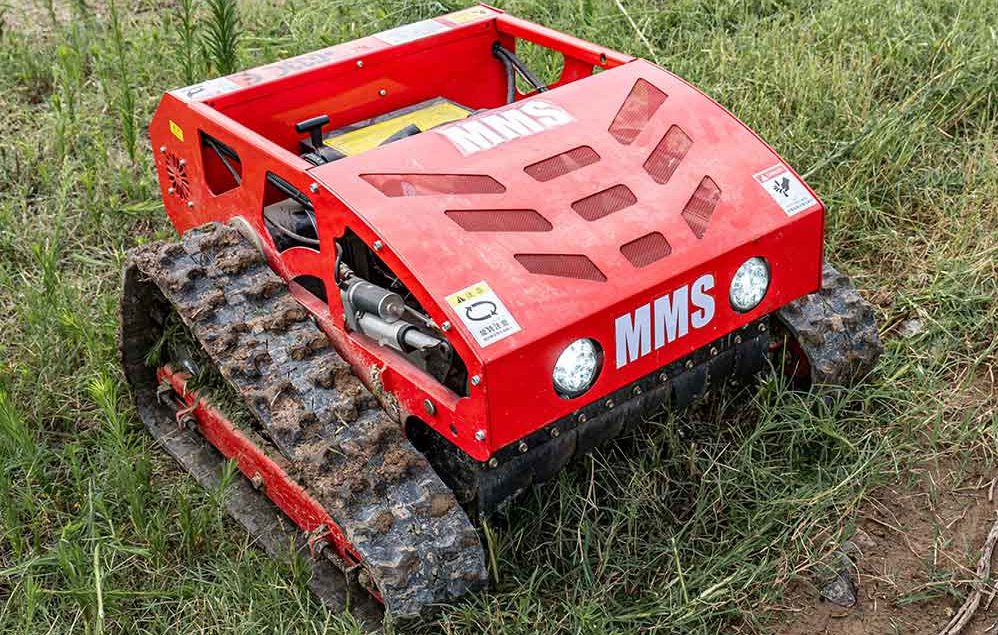Is your tracked remote-controlled lawnmower failing to start, running intermittently, or emitting thick wisps of gray smoke? Well, you're probably looking at a gunked-up lawn mower carburetor! The carburetor is like the lungs of your engine's fuel system, and when it gets restricted, the performance of your mower takes a sharp decline.
Don't worry, though - learning how to clean a lawn mower carburetor isn't rocket science. While professional carburetor service costs $42-65, once you know how to handle this upkeep yourself, it can be done for under $18 and about 35 minutes of work.
Why Clean Your Lawn Mower Carburetor?
According to some small engine mechanics I've talked with, carburetor blockages account for around 55% of lawn mower ignition issues. This makes it clear that a restricted carburetor can create a domino effect of problems that intensify over time, not improve.
Here are some indicators that suggest your carburetor needs servicing:
- Gray smoke from the muffler
- Ignition difficulties
- Engine hesitation or dying
- Diminished power delivery
- Elevated fuel usage
If you neglect servicing your carburetor, the repairs add up rapidly. Dealer statistics shows that 70% of lawn mower services include carburetor servicing, cementing the fact that most operators wait too long to service it. Keep up with regular upkeep, and the longevity of your mower will extend by 35-45%.
My First Carburetor Cleaning Experience
Last spring, I encountered the exact same problem. My six-year-old lawnmower wouldn't start after being stored away for the winter, and I noticed a strong smell of gasoline near the air filter. I used to always take it to a repair shop, but the repair costs kept increasing, and I'd have to wait two weeks, so I decided to do it myself.
I remember nervously laying out all my tools on the garage workbench, constantly referring to my phone for reference photos. What surprised me most was discovering a thick, sticky varnish coating inside the carburetor bowl - it looked like someone had poured syrup in there. That's when I realized the "fresh" gas I'd left in the tank last fall had actually degraded over the winter months.
Tools You Need to Clean Your Lawn Mower Carburetor
- Carburetor cleaning solution
- Pressurized air - for clearing out channels and particles
- Basic screwdriver collection - flathead and Phillips head
- Socket driver collection - for detaching the air filter cover
- Long-nose pliers - for unhooking linkages
- Lint-free cloths or shop towels - for wiping down surfaces
- Protective equipment - work gloves, protective eyewear, and a respirator
How to Clean Your Lawn Mower Carburetor: Step-by-Step
Step 1: Safety and Preparation
Shut down the mower and remove the spark plug wire to prevent ignition accidentally. Allow the engine to reach room temperature before you get started. Drain the fuel reservoir into a approved container to prevent leakage and to stop degraded fuel from contaminating your serviced carburetor.
My tip: I learned this the hard way - always work outdoors or in a well-ventilated garage. The carburetor cleaner fumes are intense, and I got a headache the first time because I was working in a closed space.
Step 2: Locate the Carburetor
Detach the air filter cover by loosening the bolts or releasing the tabs. Examine and service the air filter, and swap it if it is worn or excessively clogged. You can find the carburetor positioned beneath the air filter cover.
Step 3: Start with External Cleaning
Apply the lawn mower carburetor solution on outer surfaces, including accelerator and choke connections. Connection issues cause 25% of irregular engine behavior, so manipulate them by hand while the solution breaks up buildup.
Service the carburetor opening - the aperture where air flows - using solution and a cloth to eliminate buildup that may constrict airflow.
What I discovered: On my mower, the choke linkage was actually stuck partly closed due to grass clippings and oil residue. Once I cleaned it and worked it back and forth several times, it moved freely again - this alone probably would have solved half my starting problems.
Step 4: Proceed to Internal Cleaning
Spray solution into the carburetor opening while the accelerator is engaged. Use pressurized air to expel dislodged particles and solution remnants, as air force removes debris that liquid solutions can't dislodge. Also, service the fuel port where the fuel hose attaches- restrictions here lead to fuel deprivation.
During my first attempt, I made the mistake of not using compressed air. I thought the spray cleaner alone would do the job. The mower ran better initially but started having issues again after a week. The second time, I borrowed my neighbor's air compressor and spent extra time blowing out every tiny passage I could find. That made all the difference.
Step 5: Deep Cleaning for Stubborn Cases
For severe varnish buildup (like what I encountered), you may need to fully disassemble the carburetor:
- Detach the carburetor bowl - Usually held by a single center bolt or three small screws around the perimeter
- Remove the float mechanism - It's typically held by a thin pin that slides out
- Extract the main jet - A small brass component with tiny holes (this is where most blockages occur)
- Soak all metal components - I placed everything in a shallow dish with carburetor cleaner for 20 minutes
Critical observation: When I removed my carburetor bowl, about two tablespoons of reddish gel poured out - this was completely gummed fuel. No amount of spray cleaning would have cleared that without removing the bowl. If your mower has been sitting for more than 3 months with fuel in it, budget extra time for this deeper cleaning.
Step 6: Inspect and Replace Worn Components
Verify and confirm all attachments are securely fastened. Vibration loosens bolts over time, leading to operational problems. Check for deterioration like fractures, oxidation, or fatigued connections that servicing can't repair. Small carburetor fixes cost $55-110, while a substitute runs $80-160.
I noticed my carburetor gasket had become brittle and was slightly torn at one edge. I initially thought I could reuse it, but after the mower leaked gas from that seam on the first start, I ordered a $4 gasket kit online. Two days later, problem solved. Don't skip checking gaskets - they're cheap insurance.
Step 7: Reassemble and Test
Reinstall the elements and add some new fuel. Fire up the engine and let it reach operating temperature for 2-3 minutes. Irregular running is expected at first, as solution remnants burn off. Evaluate at various accelerator positions to ensure everything is going well.
Testing ritual I developed: I now always start the mower and let it idle for a full minute before touching the throttle. Then I gradually increase to half throttle, then full throttle, holding each for 30 seconds. This progressive test helped me identify a small air leak I'd initially missed because the gasket wasn't seated properly.
Understanding Different Carburetor Types
Through my research and hands-on experience, I've learned there are three main carburetor designs:
Float-Type Carburetors
- Most prevalent in residential mowers
- Uses a floating mechanism to regulate fuel level
- The bowl underneath is prone to varnish accumulation
- Cleaning focus: Bowl area, float needle valve, and main jet
Diaphragm Carburetors
- Common in two-stroke engines and handheld equipment
- Uses flexible membranes instead of a float
- Can operate at any angle
- Cleaning focus: Diaphragm inspection (don't tear it!), metering chambers
Pulse-Jet/Primer Bulb Systems
- Simplest design, often on budget mowers
- Uses engine pulses to draw fuel
- Primer bulb manually injects fuel for starting
- Cleaning focus: Primer passages and check valves
Preventive Maintenance Tips I Now Follow
After going through this process, I've adopted these habits:
- Fuel stabilizer is mandatory - I add it every single time I fill up now, not just before winter storage. This $12 bottle has lasted me two seasons.
- Run the carburetor dry for winter - At the end of each season, I run the mower until it sputters and dies, ensuring minimal fuel remains in the system.
- Fresh fuel rotation - I never keep gas in my garage can for more than 30 days. I mark the fill date on the can with a Sharpie.
- Air filter checks - Every 3-4 mows, I pop off the air filter cover and tap out the dust. Takes 30 seconds and prevents massive carburetor contamination.
- Quarterly spray cleaning - Even when the mower runs fine, I do a quick external carburetor spray cleaning every quarter. This 5-minute task has eliminated my annual deep-clean necessity.
When to Call a Professional
Despite my success, I recognize some situations require expert help:
- Severe corrosion or rust on internal metal surfaces
- Damaged mounting posts or stripped threads on the carburetor body
- Persistent performance issues after two thorough cleanings
- Fuel leaking from places you can't identify
- Missing or broken internal components you can't source
My neighbor attempted to drill out a clogged jet with a too-large bit and destroyed the entire carburetor. The replacement cost $95 versus the $10 jet he was trying to save. Sometimes DIY has limits.
The Real-World Results
After completing my first carburetor service, my mower started on the second pull - it hadn't done that in three years. The engine ran smoother, the power was noticeably improved when cutting thick grass, and I swear my fuel lasted longer.
More importantly, I saved approximately $50 in shop labor and gained the confidence to maintain my own equipment. I've since cleaned the carburetors on my snowblower and generator using the same principles.
The entire process, from gathering tools to final testing, took me about 75 minutes the first time (including multiple trips inside to watch video tutorials). The second time, on my neighbor's mower as practice, took just 32 minutes.
The Bottom Line
Learning how to clean a lawn mower carburetor maintenance will save you $42-65 that would otherwise be spent on professional servicing per visit, while also keeping your mower operating dependably. It requires just 35 minutes and will prevent the majority of ignition and operational problems.
Modern hybrid mower systems (which I'm now considering for my next purchase) promise reduced stress on the carburetor while also needing fewer cleanings. Add the professional-quality results on top, and it makes hybrid mowers a smart investment for any homeowner who cares about their lawn.
With all that said and done, one thing is for certain: understanding how to keep your machine's carburetor serviced will help you keep your grass looking pristine all season long for years to come. And honestly, there's something satisfying about fixing your own equipment and knowing exactly how it works - it's saved me money, time, and given me a skill I can use on multiple pieces of equipment around my property.

